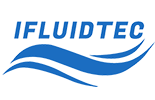What Matters to Manufacture Sanitary Clean Vessels?

The cleanness and sanitary degree for aseptic and sterile containers are crucial.
We clearly note this and seek high-quality tanks and reactors during our manufacturing. We use reliable fine stainless steel as raw material, have experienced good workers, facilitate our workers with high-precision processing tools to ensure the sanitary containers are good enough to be used in fermenting, reacting, brewing and many other preparation production fields.
Our manufactured tanks strictly follow cleanness design which is calculated via computer. We simulate the CIP spray ball cleaning within the tank to make sure no dead angle existing, and less cleaning solvent is required.
Stainless Steel Welding and Seam Treatment
The welding technique and welding seam treatment during the clean containers manufacturing process largely determines the quality of the stainless steel tank. The weld strength and the quality of the post-treatment can ensure the service life and operating efficiency of the tank.
Tools and Manufacturing Data Record
Automatic welding, MIG/TIG welding
Automatic welding room temperature and humidity control, dust control
Control of sample material, thickness and welding current
High purity argon shielded welding
Automatic welding records
Quality control and testing
During the processing, all tanks must undergo strict quality inspections. These inspections are an important part of the FAT procedure, and the relevant documents will be entered into the FAT file and finally submitted to the customer. The FAT test items that the customer can request include:
●Material inspection
●Surface roughness inspection and measurement
●Heating and cooling test
●Electrical tests such as: mixing test, vibration test, noise test, etc.
- Design, manufacture and checking is in strict accordance with manufacturing standards and GMP certification requirements to ensure that the product has no dead ends and can meet the latest GMP certification;
- In strict accordance with our internal quality management system, the quality of processed parts is tracked from the first process. Any process that is unqualified must be corrected. The purchased parts are subject to market research to select the best products and main parts. There must be a certificate or test report, and the product assembly must be carried out according to the drawings;
- Provide complete drawings and welding processes and archive them, and have a list of spare parts to facilitate subsequent long-term maintenance.













